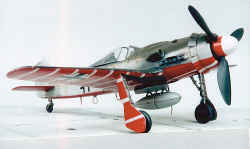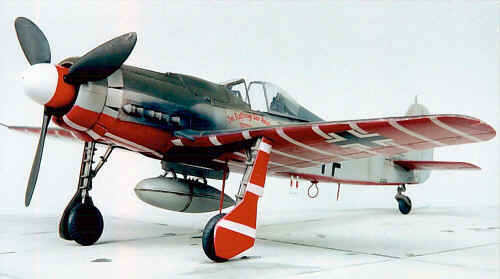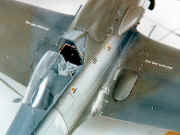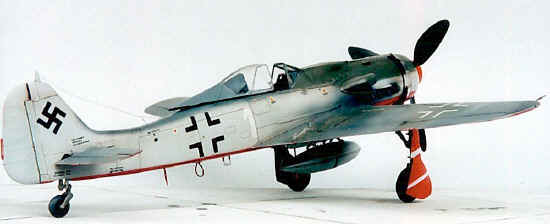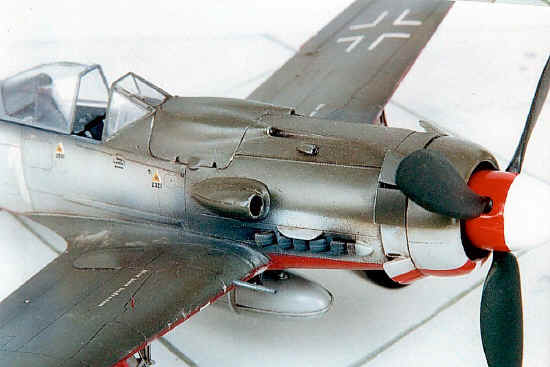 |
||||||||||||||||||||||||||||||||||||||||||||||||||||||||||||
|
Airplanes |
||||||||||||||||||||||||||||||||||||||||||||||||||||||||||||
|
The Railroad defender: Fw.190D-9 in 1/48 scale |
||||||||||||||||||||||||||||||||||||||||||||||||||||||||||||
|
by Giovanni Galvan © 2002 Modeler Site |
||||||||||||||||||||||||||||||||||||||||||||||||||||||||||||
|
Legal Notice No material from Modeler Site any Web site owned, operated, licensed, or controlled by Damian Covalski may be copied, reproduced, republished, uploaded, posted, transmitted, or distributed in any way, except that you may download one copy of the materials on any single computer for your personal, non-commercial home use only, provided you keep intact all copyright and other proprietary notices. Modification of the materials or use of the materials for any other purpose is a violation of Damian Covalski's copyright and other proprietary rights. Read More here > Legal notice The discussion about which was the best fighter in
WWII is still open, but it is sure that the last operational version of the
Fw.190, the D-9, is among the firsts. In fact, the addition of the Jumo 213
engine gave the necessary power to the already big project of Kurt Tank, the
power needed to fly at the high altitude necessary for a good bombers
interception.
The Kit The Italeri box pushed me to build this Fw.190D-9; this model carry the very particular insignia of an unit tasked with the railways patrolling during the last period of the war, during which, the trains were an easy prey of the allied fighter-bombers raids. Fighters used by the Germans in the low level escorts, such as those to the landing Me.262s, were characterized by vivacious color schemes on the lower surfaces, to convince the German flak that there could still exist friendly aircraft in the sky. I've used the decals from an old Dragon box, and built the example piloted by the Hauptmann Waldemar Wubke, in service with the famous Aces unit, the JV 44. Painting The upper surfaces of the wings and fuselage, wear bands of Dunkelgrün RLM 83 FS 34096 (Gunze H36) and Mittelgrau RLM 75 FS 36132 (Gunze H37), with an irregular scheme, while the sides of the fuselage are in Hellblau RLM 76 FS 35622 (Gunze 417), without the classical faded spots of the upper colors; particularly in the lower surfaces, which had a Red background with White small strips under the wings, eight each side.
To complete the final appearance of the model, we used a wash of Braun oil to accentuate the paneling, while the exhaust stains were done with varied hues of dark Greys. The general appearance was rendered a little more weathered, and I hope not to be too far from the reality, knowing also the brief life of these aircraft in the operational arena at the end of the war. Building The assembly of the model didn't bring out big surprises. The cockpit is fairly good, and to my opinion every important detail is there, I only added the seat belts which I made out of adhesive paper, and the buckles made with metallic thread. The interior was painted with Schwarzgrau RLM 66 FS 36081 (Gunze H301), with a light Grey drybrushing. The stuff around the instrument panel is in Maroon. The Revi gunsight has been scratchbuilt with plasticard, slightly thinner than the original part. Before closing the fuselage, I drill openned the exhaust tips and installed them in the engine.
There were no photo etched parts in the Italeri kit, so I had to replace the frames in the exhaust pipes, using thin plasticard strips.
Once this little problem was solved, the rest was a real pleasure, and a tribute to the fact of so many desks full of these models in almost every contest. This Focke Wulf is easy to build, more than other models, should I say! Now I understand why there is a lot more room for modifications and superdetailing.
The wheels are good, including the tail wheel. I added the brakes piping, made with iron rope. I painted the wheel wells and the gear struts in Grau RLM 02 FS 34226 (Gunze H70).
Color chart
I hope the final result was fairly good, and that the Fw.190 "maniacs" will be not too hungry with me!
Support us ordering our notes in PDF > Here |
||||||||||||||||||||||||||||||||||||||||||||||||||||||||||||
